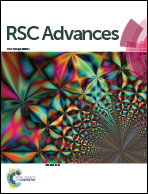Conductive polymer doped two-dimensional MXene materials: opening the channel of magnesium ion transport
Abstract
MXene has a series of advantages, such as high specific surface and conductivity, abundant surface functional groups, and effectively accelerating the electron conduction of electrochemically active sites. It is worth noting that due to the van der Waals force between MXene layers, the layers attract each other and the layer spacing becomes smaller, which cannot give full scope to the performance of MXene. Therefore, we introduce a conductive polymer PANI. The purpose of introducing acidified PANI to construct PANI/Ti3C2 composites is to make full use of the conductive framework of Ti3C2, the abundant functional groups on the surface, and the synergistic effect between the composites, to alleviate the stacking of Ti3C2 layers by occupying the active sites on the surface of Ti3C2 with PANI. At the same time, the proportion of PANI is changed to 40% of Ti3C2, and the composite when used as the cathode of magnesium ion batteries shows a mass-specific capacity of 132.2 mA h g−1 and a series of excellent electrochemical properties at 50 mA g−1 current. This provides a new design idea for the subsequent development of high-performance magnesium storage cathode materials.



 Please wait while we load your content...
Please wait while we load your content...